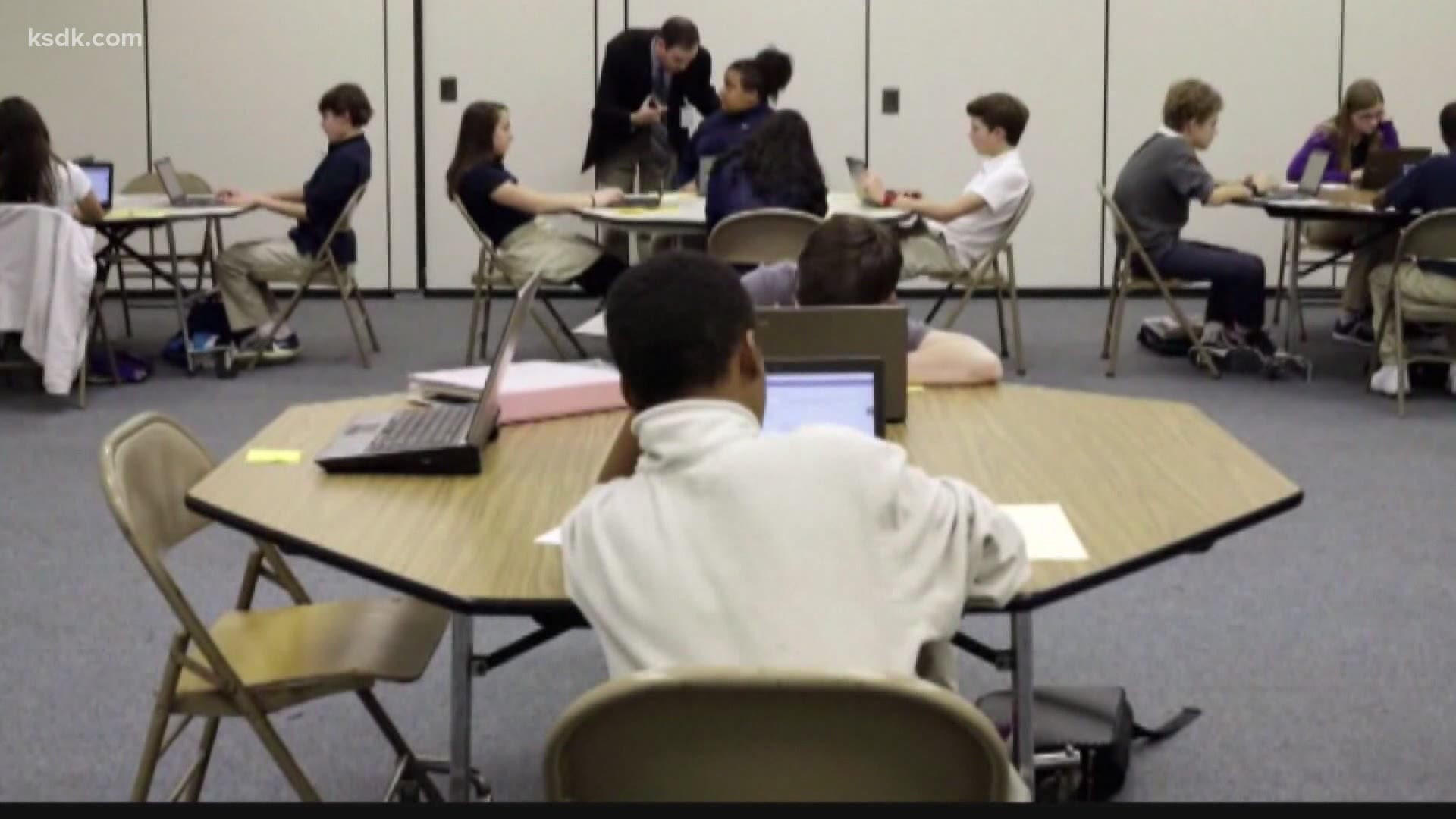ST. LOUIS — In a school year all about virtual learning, a disconnection is devastating.
Anna Guzon is the director of YourWords STL, a nonprofit that tutors St. Louis students. She has witnessed the disconnection and devastation in St. Louis students in underserved communities.
“When we put 60 students or so on the screen from different parts of St. Louis, it is very easy to see that divide,” she explained. "The worry is that these effects could last a lifetime."
The digital divide is the gap in technological resources between different socioeconomic groups. While this is not a new problem, it presents itself differently during a pandemic.
School districts may provide hotspots, tablets and laptops, but the kids behind the screen don’t always know how to use them.
“If you haven’t been growing up with that technology in your household, you’re just learning it on the fly – oftentimes by yourself,” said Guzon.
Problems may be as basic as failure to connect video or audio during virtual learning. With parents away at work or grandparents who don’t understand the technology themselves, a child is left to troubleshoot on their own. Grades, self-esteem and mental health suffer over time.
More complex problems stem from a child’s new learning environment. Guzon reports working with children reluctant to turn on their cameras.
“They’re embarrassed about their house or wherever they are staying. Or there’s so much going on, there’s so many people living in their households…they can’t put their video and audio on because it would be disruptive to the classroom,” she explained.
Distractions outside of the home can also hinder their schooling.
“There is violence that occurs in people’s neighborhood,” said Guzon. “While they’re learning, they’re not in a safe space like they were in school. They are in a house that is in a neighborhood where maybe they are distracted by the sounds of violence on their street.”
While Guzon sees these disadvantages in her students, ranging from 10 to 20 years old, her biggest concern is for younger students who are navigating technology when they should be learning fundamental skills.
“These are crucial times for those younger age groups and they’re missing out on that time,” she explained. “Will they be able to make that up later? That’s really to be seen.”
The biggest cracks of the digital divide are in Black communities, like north St. Louis County.
Kim Daniel with Americorps VISTA can remember seeing the digital divide when she went to school in north St. Louis years ago, through issues that were apparent long before the pandemic.
“Computers in a whole have not been marketed to low income families,” said Daniel. “The digital divide continues to broaden the gap.”
Daniel thinks one of the biggest factors in overcoming the divide are parents or guardians who understand the importance of education and make it a priority.
“People don’t consciously know that they’re making the decision to have entertainment over education,” she explained. “Once people understand that it’s just as easy to get Internet access as it is to get cable television, then there may be a change.”
Community resources that work with students, like YourWords STL can be a source for additional help.
“There are many organizations out there in many schools who are able to provide tutors and libraries have been able to provide hotspots,” said Guzon. “There are people out there who want to help.”

